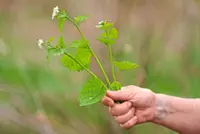Whether in shy pink or fiery red, the bunga kantan is a show stealer in the kitchen and beyond. Photo: Julie Wong
If I had to pick only one ingredient to represent Malaysian gastronomy, it would be the bunga kantan. The torch ginger flower has a special place in our collective heart and taste buds, wired into our psyche with our first taste of asam laksa and nasi ulam. Even haters cannot deny its powerful presence.
Bunga kantan is what gives many iconic Malaysian dishes their distinctive taste: asam laksa, nonya laksa, asam pedas, nasi ulam, nasi kerabu and the numerous kerabu salads. Unlike the chilli, it is a truly local ingredient. It grows in tropical and sub-tropical regions, from Hawaii to Congo and the Philippines, but it is native to Malaysia and Indonesia.





